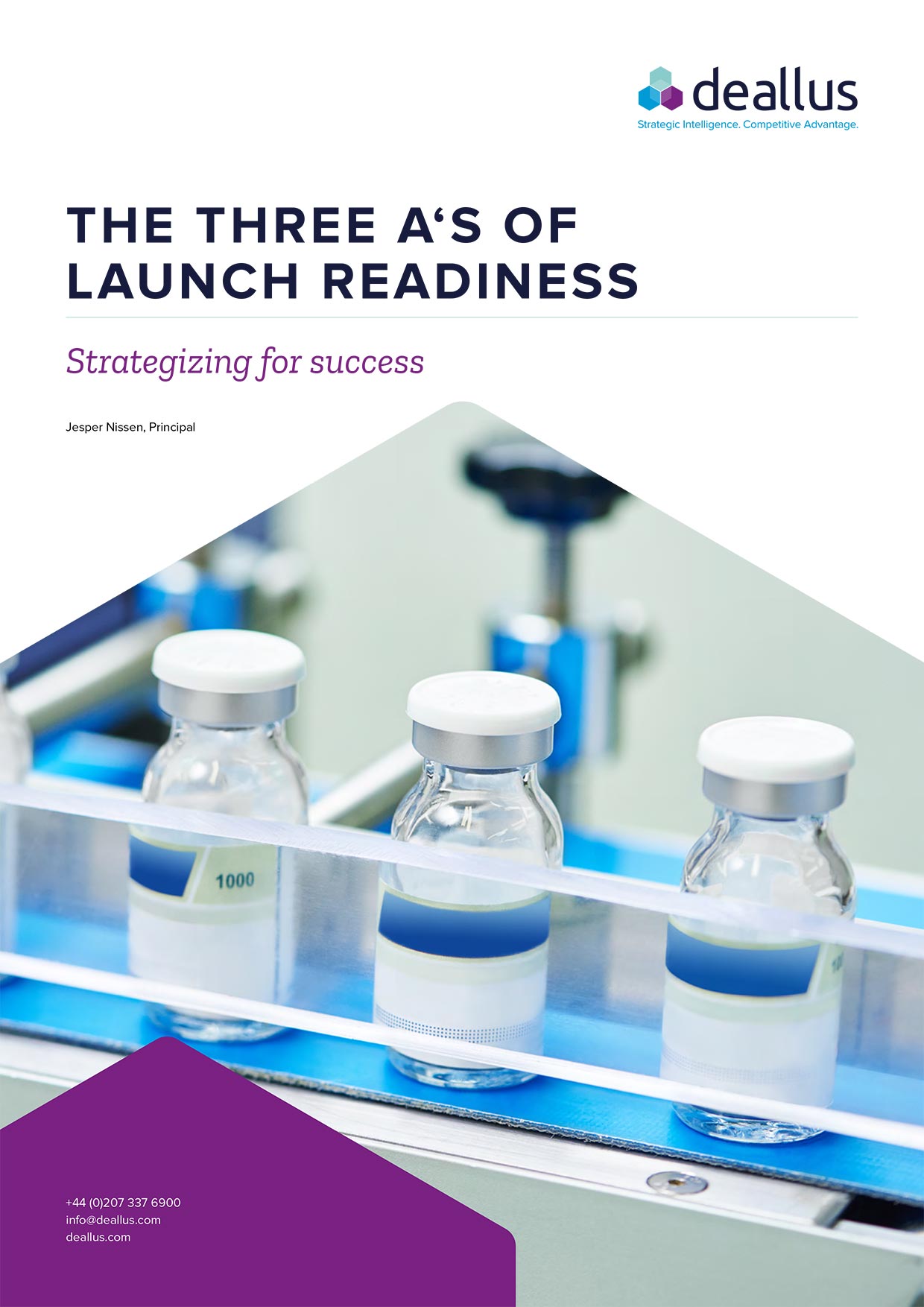The Three A’s of Launch Readiness – Strategizing for success
Jesper Nissen
It can take years to develop a drug – a launch can fail in a matter of weeks
Getting a drug from bench to launch takes an average of 12 years and $1.5 billion.1 Given responsible guardianship and the careful promotion to be expected at that level of investment, it should come as a surprise when any drug falls flat at launch.
But it doesn’t – drug launch failures happen more frequently than pharma companies care to admit. From 2009-2017, approximately 50% of drug launches failed to meet prelaunch sales expectations. Over 25% didn’t meet half their forecasted revenues.2 Of the 0.02% of candidate drugs (I in 5000) that successfully reach the market, only a third meet first-year financial expectation.3
And when launches fail, the rationalizations begin: Bad luck. Bad timetables. Unforeseen complications. Unforeseeable competition. The messaging underwhelmed the target audiences. The drug costs overwhelmed the messaging. The drug overpromised, the drug underperformed.
Any and all of these may be true. But, when each case is scrutinized individually, the evidence usually points to one of three problems: the pharma brand managers and their teams did not anticipate their own overconfidence or the moves of their competitors, they did not adapt their strategies to new market conditions as they arose, or they did not align their strategy and implementation plans across functions and geographies.
Anticipate, Adapt and Align – the three A’s of successful launch strategy. To understand and implement them require more than sending out an email meeting request and marking off a block of squares on a Gantt chart. It takes strategic vision, a holistic understanding of every vagary of the marketplace, and a forthright and ruthlessly honest assessment of both the product being launched and the competitive space it is meant to occupy.
About the author

Jesper Nissen, PhD
Jesper is a Deallus Senior Principal who has led a wide range of projects over his 6+ years at Deallus. He offers extensive experience in competitive landscape monitoring, manufacturing and diagnostics technology assessments, and global positioning and brand planning projects. His expertise covers several therapy areas including oncology, respiratory, rheumatology and rare diseases. Additionally, Jesper is leading internal and external training activities including engagements on competitive readiness best practices within the pharmaceutical industry.
You may also be interested in…
World Brain Day 2024
Established by the World Federation of Neurology in 2014, World Brain Day seeks to raise public awareness on various neurological health topics each year. This year’s theme, “Brain Health and Prevention”, brings awareness to preventive measures that can alleviate the burden of many neurological conditions for patients across the world.
World Kidney Cancer Day: The future of RCC treatment
World Kidney Cancer Day brings much needed attention to a disease affecting hundreds of thousands of people worldwide.
Revolutionizing Blood Cancer Treatment: A Dive into Cutting-Edge Therapies
World Blood Cancer Day [28 May 2024] serves as a stark reminder of the significant challenges faced by the millions battling these life-threatening diseases. Here at Deallus, we have been privileged enough to partner with many leading companies in this space to support the development of lifechanging therapies across haemato-oncology.
World Day for Cultural Diversity 2024
Feel the driving force of Cultural Diversity as voiced by my global Deallus colleagues. Happy World Day of Cultural Diversity!





